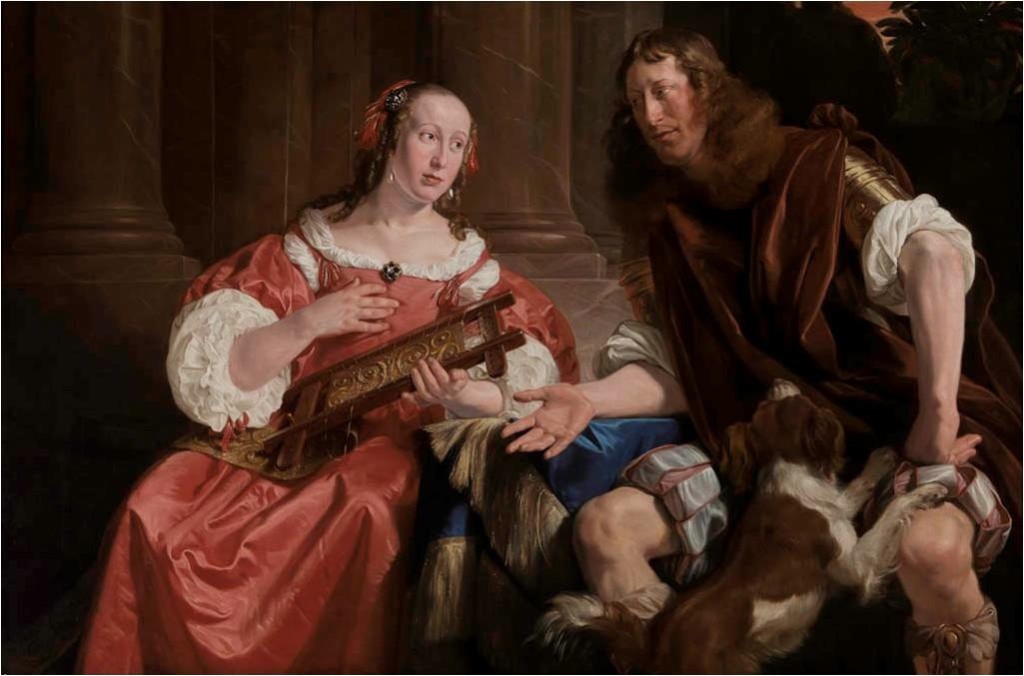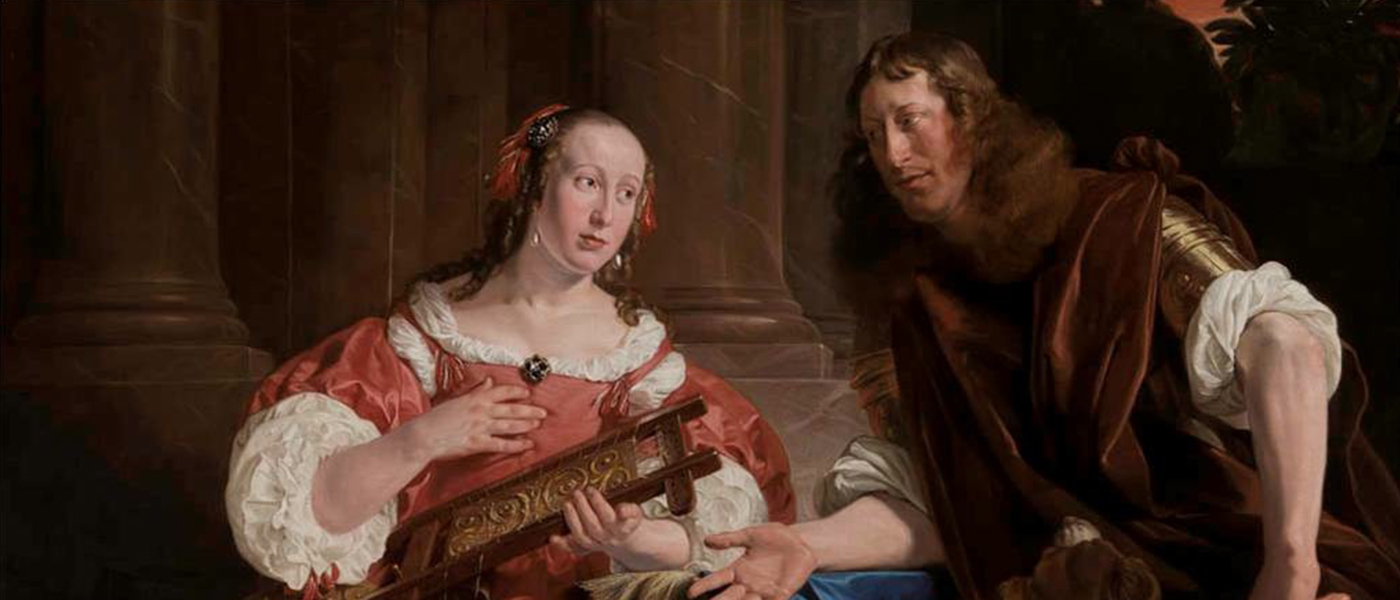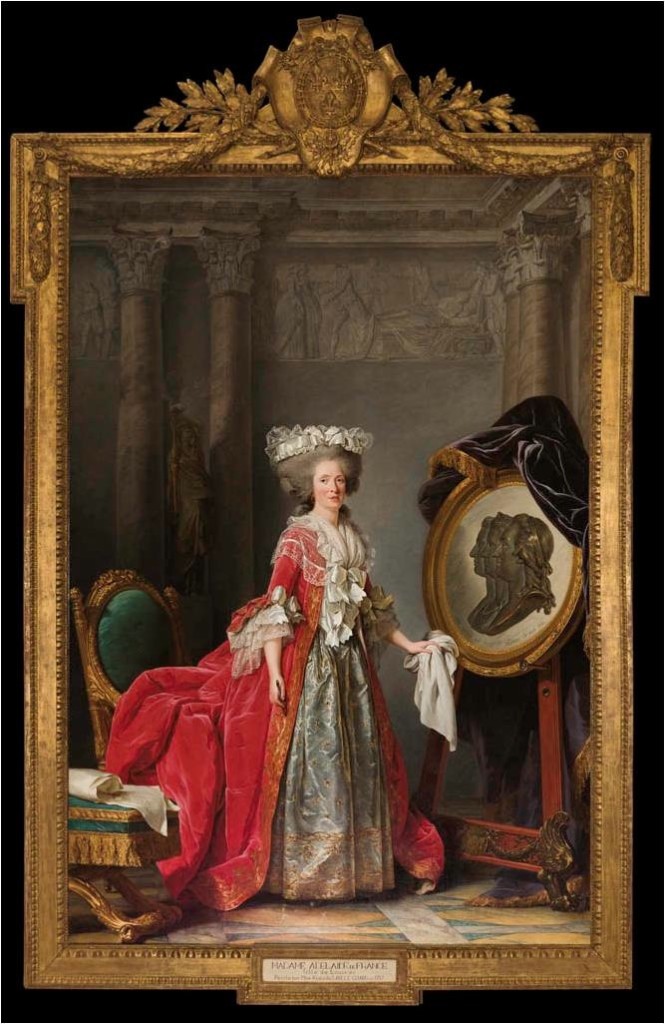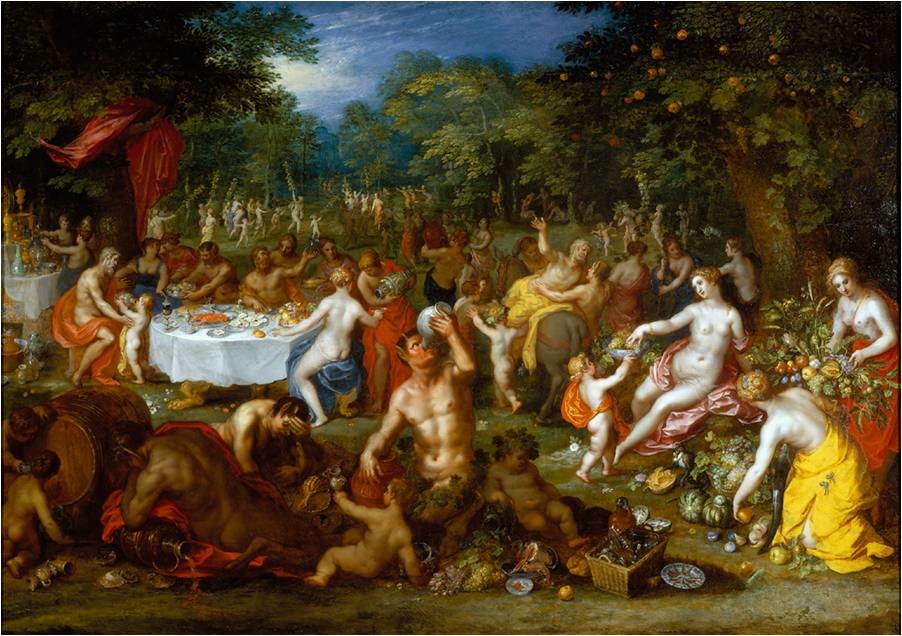Hendrick van Somer’s painting of Saint Jerome depicts him as old and gaunt, for a moment glancing away from the manuscript in front of him. With quill in hand, he spent years translating the Hebrew Bible into Latin. The painting places him in an isolated location, perhaps a cave on the edge of a desert. A contrast between shadow and light invigorates the painting and highlights Saint Jerome.
The artwork, created in 1651, is part of The Golden Age of European Painting, a sweeping exhibition at Munson-Williams-Proctor Arts Institute in Utica. The show features 70 pieces from the 1600s and 1700s, focusing on Dutch and Flemish artists, as well as artists from France, Italy, Germany, Spain and England. It encompasses landscapes, portraits and paintings with religious themes. Still-works and pieces drawing on Greek and Roman mythology also hang on gallery walls.
Certainly, the religious paintings are a key segment of the show. They depict various subjects ranging from the raising of Lazarus, as seen in David Teniers’ work, to “The Sacrifice of Isaac” by Giovanni Baptista Pittoni the Younger.
The exhibit demonstrates that artists’ approach to such subjects was far from uniform. There’s vivid detail, as in “The Feast of Herod” by Jan Simonszook Pynas. King Herod, elegantly dressed, sits at a banquet table while Salome, his daughter, brings a platter holding Saint John the Baptist’s severed head.
The contrast between light and shadow emerges again in “Ecce Homo (Behold the Man).” It portrays Jesus Christ in close proximity to Pontius Pilate and his minions. After much debate, art historians attribute the painting to Gerard Douffet.

Jan deBray, “A Couple Represented as Ulysses and Penelope.” From collection of the Speed Art Museum.
Elsewhere, the exhibit presents “Princes of the Church Adoring the Eucharist,” by Peter Paul Rubens. Jan van Kessel’s “Ecce Panis Angelorum (Behold the Bread of Angels)” combines cornucopias stuffed with grapes and flowers, floral arrangements and bunches of grapes, celebrating the Roman Catholic sacrament of Holy Communion.
A dozen portraits are included in the exhibit, including Johannes Cornelisz Vespronk’s “Portrait of a Man,” which portrays a burgher — a successful Dutch businessman. Thomas Gainsborough’s “Mrs. John Hallam” reminds us why he was regarded as one of the finest portrait painters of his time. That work, well-done but sparse, contrasts with Adelaide Labille-Guiard’s portrait of Madame Adelaide, daughter of the French King Louis XV. Her painting is large, lush, beautifully detailed.
Some artists of the period were deeply interested in ancient mythology. Guiseppi Maria Crispi’s “Sleeping Cupids Disarmed by Nymphs” has a humorous context. As tiny cupids slumber, nymphs, associated with the goddess Diana, bind each cupid’s wings and burn their arrows.
“A Bacchanal,” by Hendrick van Bolen I and Jan Brueghel the Elder, details a drunken orgy paying homage to the god of wine, Bacchus. Gods and goddesses, satyrs and nymphs, romp in the foreground, while humans, disciples of Bacchus, head toward a temple in the woods.
Finally, there are a few examples of Dutch artists doing genre paintings that portrayed everyday life. “The Interior of a Kitchen,” by Cornelisz van Slingeland, shows three maids working in a kitchen. One of the best paintings in the show, Nicolas Tournier’s “Dice Players,” depicts men with calloused hands, who clearly aren’t part of the nobility. He also creates a sharp contrast between light and shadow.
The Golden Age of European Painting, drawn from the collection of the Speed Art Museum in Louisville, Ky., is certainly large enough to explore various themes. The artworks, and accompanying material such as timelines for the 1600s and 1700s, touch on religious, economic and cultural changes that took place during those two centuries. There’s room to explore artistic trends such as the influence of Caravaggio, a masterful artist, on some painters. Most of all, the exhibit not only surveys a two-century period but also emphasizes individual artworks.
The Golden Age of European Painting is on display through Sept. 14 at the Munson-Williams-Proctor Arts Institute, 310 Genesee St., Utica. The venue is open Tuesdays through Saturdays, 10 a.m. to 5 p.m., and Sundays, 1 to 5 p.m. Admission is $10 for adults, $5 for students. For more information, call 797-0000.











